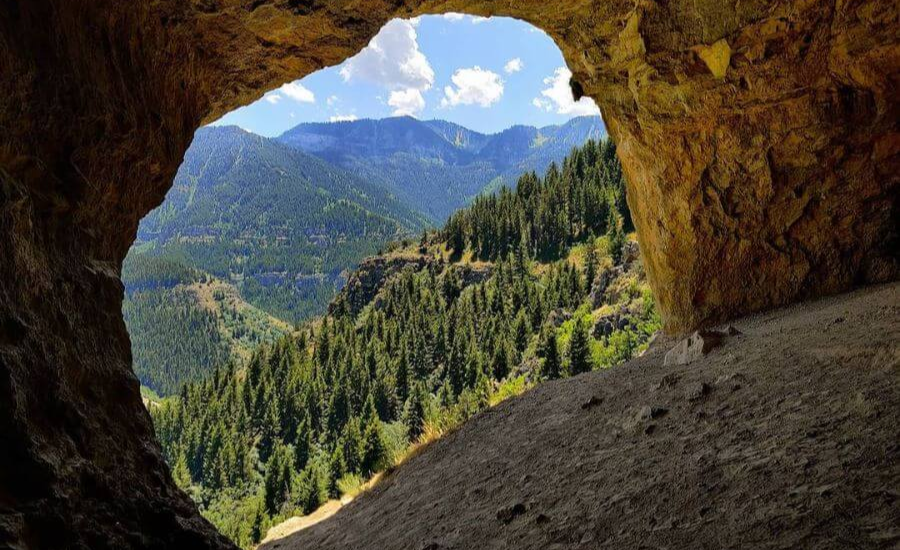Logan Canyon, located in the picturesque Cache Valley of northern Utah, is a stunning natural wonder that offers visitors an escape into the great outdoors. With its breathtaking landscapes, diverse wildlife, and recreational opportunities, Logan Canyon is a must-visit destination for nature enthusiasts, hikers, and anyone seeking a tranquil retreat from the hustle and bustle of everyday life. This article explores the history, natural features, recreational activities, and conservation efforts of Logan Canyon, Utah.
Introduction
Logan Canyon stretches approximately 25 miles from the city of Logan to the summit of the Wasatch Range, showcasing a dramatic landscape of towering cliffs, dense forests, and sparkling streams. The canyon is part of the Wasatch-Cache National Forest, encompassing over 1.4 million acres of protected land. Its diverse ecosystem includes everything from alpine meadows to lush riparian zones, making it a hotspot for both wildlife and plant species.
The canyon’s geology is equally fascinating, characterized by limestone cliffs, granite outcroppings, and colorful sedimentary rocks that tell the story of the Earth’s geological history. This unique combination of natural beauty and geological intrigue makes Logan Canyon a popular destination for both casual visitors and dedicated outdoor adventurers.
The History of Logan Canyon
Logan Canyon has a rich history that dates back thousands of years. Indigenous peoples, including the Shoshone and Ute tribes, were the first inhabitants of the region. They relied on the canyon’s natural resources for hunting, gathering, and spiritual practices. The canyon served as a vital corridor for trade and travel between various tribal groups.
In the mid-1800s, European settlers arrived in the Cache Valley, drawn by fertile land and abundant resources. The construction of the Logan Canyon Road in the late 1800s opened up the area for tourism and recreational activities, making it accessible for those seeking to explore its natural beauty. Today, Logan Canyon is not only a historical site but also a popular recreational area, with numerous opportunities for hiking, camping, fishing, and more.
Natural Features of Logan Canyon
Scenic Landscapes
One of the most striking aspects of Logan Canyon is its diverse and stunning landscapes. The canyon is characterized by cliffs, lush forests, and meandering rivers, creating a breathtaking backdrop for outdoor activities. The elevation ranges from about 4,500 feet at the valley floor to over 9,000 feet at the summits of the surrounding mountains, resulting in a variety of microclimates and ecosystems.
Vegetation and Flora
The flora of Logan Canyon is diverse, featuring a mix of coniferous and deciduous trees. Aspens, pines, and firs dominate the higher elevations, while cottonwoods and willows thrive in the riparian areas along the Logan River. Wildflowers bloom throughout the summer, adding vibrant colors to the landscape and attracting pollinators such as bees and butterflies.
Wildlife
Logan Canyon is home to a rich variety of wildlife, making it a prime location for wildlife viewing and photography. Visitors may encounter deer, elk, moose, and various species of birds, including eagles and hawks. The diverse habitats support a wide range of animal life, making it an ideal location for nature lovers and photographers alike.
Water Features
The Logan River, which runs through the canyon, is a vital water source and provides recreational opportunities such as fishing and kayaking. The river is known for its excellent trout fishing, attracting anglers from all over the region. In addition to the river, numerous streams and lakes dot the landscape, offering serene spots for picnicking, swimming, or simply enjoying the beauty of nature.
Recreational Activities in Logan Canyon
Logan Canyon is a paradise for outdoor enthusiasts, offering a wide array of recreational activities throughout the year. Whether you enjoy hiking, camping, fishing, or winter sports, there is something for everyone in this beautiful canyon.
Hiking Trails
The canyon is home to numerous hiking trails, ranging from easy walks to challenging backcountry routes. Some popular trails include:
- Wind Caves Trail: This moderate hike leads to stunning views of the canyon and unique limestone formations. The trail is about a 3 3-mile round trip and offers a glimpse of the area’s geology and diverse plant life.
- Bear Lake Trail: A more challenging hike, this trail offers breathtaking views of Bear Lake and the surrounding mountains. The 5-mile round-trip trail takes hikers through lush forests and alpine meadows.
- Tony Grove Lake Trail: This easy 1-mile loop trail surrounds the beautiful Tony Grove Lake, making it a perfect spot for families and those seeking a stroll amidst nature.
Camping
Logan Canyon offers several campgrounds, allowing visitors to immerse themselves in the beauty of the area. Popular campgrounds include:
- Tony Grove Campground: Located near Tony Grove Lake, this campground offers access to hiking trails, fishing, and stunning scenery. It features amenities such as picnic tables, fire pits, and restrooms.
- Red Pine Campground: A more secluded option, this campground is situated among towering pines and offers a peaceful retreat. It is an ideal spot for those looking to escape the crowds and enjoy a tranquil camping experience.
Fishing and Boating
The Logan River is renowned for its trout fishing, making it a popular destination for anglers. Fishermen can expect to catch rainbow and cutthroat trout, with opportunities for both fly fishing and spin fishing. In addition to fishing, kayaking, and tubing are popular activities during the summer months when water levels permit.
Winter Sports
In the winter, Logan Canyon transforms into a winter wonderland, offering a variety of winter sports. Skiing and snowboarding are popular activities at the nearby Beaver Mountain Ski Area, which features diverse terrain for all skill levels. Snowshoeing and cross-country skiing are also popular options for those looking to explore the snowy landscape.
Conservation Efforts in Logan Canyon
With its natural beauty and ecological significance, Logan Canyon has been the focus of various conservation efforts aimed at preserving its unique ecosystems and habitats. Local organizations, government agencies, and community members have come together to protect the canyon’s natural resources and promote sustainable recreational practices.
Habitat Preservation
Efforts to preserve the habitats of Logan Canyon include habitat restoration projects, invasive species management, and wildlife monitoring. These initiatives aim to protect the diverse plant and animal species that call the canyon home, ensuring that future generations can enjoy its beauty.
Sustainable Recreation
Promoting sustainable recreation practices is a key focus of conservation efforts in Logan Canyon. Education programs and outreach initiatives encourage visitors to follow Leave No Trace principles, minimizing their impact on the environment. This includes proper waste disposal, staying on designated trails, and respecting wildlife.
Community Involvement
Community involvement is vital in the conservation of Logan Canyon. Local volunteers participate in clean-up events, tree planting, and other initiatives aimed at preserving the canyon’s natural beauty.
Conclusion
Logan Canyon, Utah, is a hidden gem that offers an abundance of natural beauty, recreational opportunities, and a rich history. Logan Canyon offers adventure on trails, tranquility by the river, and opportunities to connect with nature for everyone. Through conservation efforts and community involvement, this beautiful canyon will remain a treasured destination for future generations. Visit Logan Canyon to explore breathtaking landscapes, diverse wildlife, and countless recreational opportunities in this enchanting Utah destination.
Stay linked for further updates and visits: Blog Merk!





Leave a Reply